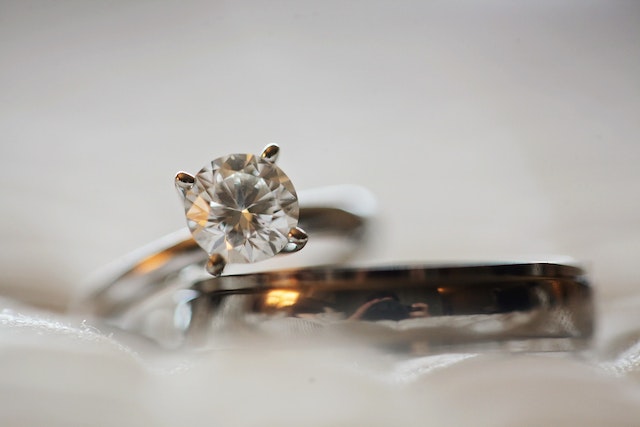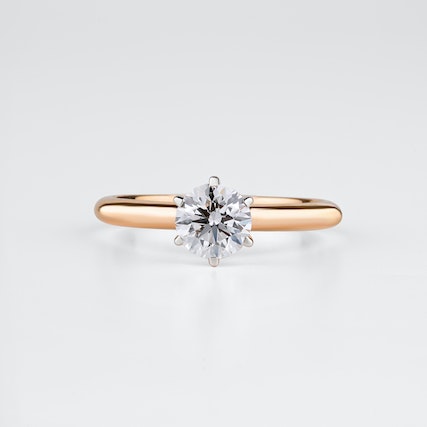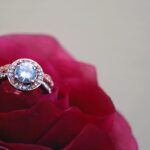Diamond
4 Ways To Identify A Raw Diamond
When you hear the term “raw diamond”, what comes to mind? This is a key aspect when we talk about artificial and natural diamonds. We’ll be discussing raw diamonds and how you can identify them to help you understand this better.
It takes a lot of effort to create a fine diamond. A diamond does not come naturally beautiful. They are cut from their natural forms by miners, who see them as ugly and raw. What is the meaning of a “raw diamond”? Let’s get started!
Table of Contents
What is a Raw Diamond?
Raw diamonds or rough diamonds refer to the uncut forms fine diamonds. These stones take a long time to form and are untouched by mining companies before they can be mined. It’s only volcanic eruptions that make these stones available to us humans.
It is not surprising that cut diamonds are often removed from industries. High heat and pressure caused by volcanoes cause the carbon atoms to come together and create a structure. They will form crystals that can be used as rough diamonds after cooling.
Raw diamonds can look like a set of glasses. These stones are still being cut so they should not shine. Rough diamonds are of high quality and can pass the test.
How do you tell if this is a rough diamond? Let’s look at the next section to learn how to identify a rough diamond.
How to Identify a Raw Diamond
While walking around rough diamond can be difficult, it is possible to find one. Although they may seem rare, they are most commonly found at mining sites. This doesn’t mean you won’t come across them. Although it is difficult to distinguish them from the refined diamonds, these are some things that you can look at to help identify raw diamonds.
1. Concentrate on the Gravity
You should be aware of the specific gravity of rough diamonds if you want to find one. The gravity of all diamonds is 3.5 to 3.53g/ml. This is the ratio between the density of the gemstone and a pure liquid with a thickness of 1. This gem’s identity should not be confused with that of quartz, which has a gravity between 2.6 and 2.7.
This gravity makes it easy to seperate the raw diamond from the other diamonds. This aspect can also be used to separate gemstones from diamonds by shaking tables. Here’s how you can use this tool.
- Fill a glass of normal size with water and fill it to 3/4.
- Drop the stone into the glass.
- If the stone sinks, it is a real raw diamond. If it floats it is fake.
2. Check For Thermal Absorption
Diamonds are among the most effective heat absorbers of all gemstones. Diamond testers can verify this. These tools can be used hand-held with a metal head that touches the diamond being test.
It is amazing how it works. It heats the stone and measures its heat. A skilled tester can tell you if the stone is a diamond or a beautiful gemstone.
A diamond tester is available at every reputable jewelry shop. You don’t need to purchase this item to determine if the stone is genuine.
3. Take a Hardness Test
Every diamond, whether it is rough or polished, is undoubtedly the hardest of all gemstones. This gem is the hardest on the Mohs scale, which ranks minerals from the softest to the hardest. How can you determine the hardness of a stone?
You shouldn’t scratch glass with the suspect stone. Glass has a Mohs rating of 5.5, which means most stones that look like diamonds can scratch it. They are also more common than diamonds so the test won’t be as reliable.
To get good results, scratch corundum. Surprisingly the stone is rated 9 on the Mohs scale. This includes ruby, sapphires. There are high chances your stone is a diamond if it scratches corundum.
Some metals, like moissanite and cubic zirconia, are resistant to scratching. The hardness test is less reliable than other tests such as the thermal test.
4. Use the Ultraviolet (U.V.) Light Test
Check for originality in your gem. 30 percent of diamonds will glow blue when exposed to a shortwave U.V light. This will occur after you place the diamond under the U. V lamp. This method is not 100% reliable because some diamonds will shine and produce other colors, such as yellow, red, and orange.
For reliable results, you can use the tester tool to perform all of these tests. There are also other methods that can be used to determine if the stone is a rough diamond. Here are some examples:
- To determine if the stone will break, heat it. If it does not break, it is likely that it is a rough diamond.
- Use a fog tester.
- You should look for the crystal form , the diamond.
What are the Different Types Of Raw Diamonds
There are three types of rough diamonds. This is when most people cut and refine diamonds. These types are briefly explained below:
Natural Raw Diamonds
These are the raw diamonds that the mining industry removes from the earth. The cost of getting these gems from their source is why they are so expensive. These gems are mined by companies in their raw form, but the following is a list of some of the most famous rough diamonds.
- Sergio rough diamond: This is the largest known rough diamond. It is 3,167 carats in weight. It is not allowed to be used for jewelry making, but industrial uses.
- Cullinan Diamond: This precious raw gemstone is a treasure trove. It is 3,106.75 Carats in weight and can be used in both jewelry and industrial applications. It also gave rise to the star of Africa, with 530.4 carats.
- Tiffany Yellow Diamond: This rough diamond weighs in at 287.4 Carats. It is the largest yellow diamond ever made. It can be used for industrial purposes as well as in the jewelry industry.
- Taylor Burton Diamond: This diamond is beloved by many. It weighed 241 carats at its initial weight before it was cut.
- Salt and Raw Pepper Diamonds: These gems can also be rough diamonds so don’t surprise. They come in many colors, including non-clear and gray. Rose-cut diamonds are made from raw salt and pepper. They lack a large surface area, which could make it difficult to believe they are natural diamonds.
You might come across other natural raw diamonds, in addition to the ones mentioned.
Lab Raw Diamonds
These raw diamonds are made from laboratory processes, which eliminates the mining costs. These are real rough diamonds and have the exact same characteristics as natural diamonds. These gems offer more benefits than the natural ones, which is surprising.
Diamonds grown in labs are inexpensive, natural and ethically sound.
Uses of Raw Diamonds
Rough diamonds are just as important as refined diamonds. These gems retain some of their best characteristics even though they have been cut. These are the main uses for raw diamonds.
Making jewelry
Raw diamonds are used by many people in the jewelry industry to create their products. These gems have been used by traders for a long time as a way to express their love. Some retailers also sell rough diamonds uncut as ornaments.
Industrial Purposes
These diamonds are used by firms for various industrial purposes. They are commonly called industrial diamonds. These diamonds are not only used to make jewelry but also serve a variety of other purposes.
To improve performance, companies use the raw diamond bits to make cutting blades. Some concrete workers use diamond saws for creating grooves in the concrete.
These companies drill with raw diamonds. Diamond grains are used to aid in the creation of metal tops.
Also, rough diamonds can be used as polishing tools. These companies turn the rough diamonds into a paste, which can be used to polish items.
Conclusion
This information will help you learn a lot about raw diamonds. It is not always easy to find the right one. This is especially true if you are trying to determine if it is a real raw diamond. Don’t worry, just follow the tips and insights provided in this article and you will be fine.
Do you feel confident and have gained some experience talking about rough diamonds? Please leave a comment for us to know. We would love to know if you have additional information on these treasures.







